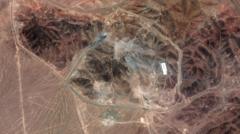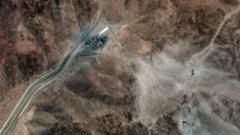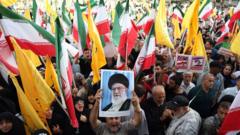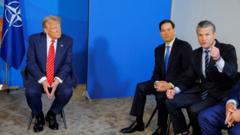**In the wake of the recent war with Israel, Iranian Supreme Leader Ayatollah Ali Khamenei's return from hiding may reveal a nation filled with frustration and calls for change as military power wanes and dissent festers.**
**Iran’s Supreme Leader Faces a Transformed Nation After War with Israel**
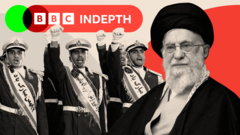
**Iran’s Supreme Leader Faces a Transformed Nation After War with Israel**
**A prolonged absence during conflict exposes Ayatollah Khamenei to a staggering reality of chaos and dissent upon his return.**
After nearly two weeks in hiding due to escalating conflicts with Israel, Iran's Supreme Leader, Ayatollah Ali Khamenei, 86, now faces a precarious situation marked by significant internal dissent and a devastated military. Perched in an undisclosed bunker, Khamenei's absence has heightened fears of assassination, making his re-emergence during the current ceasefire vital yet treacherous.
Though U.S. President Donald Trump and Qatar's Emir facilitated this pause in warfare, the threat to Khamenei remains, as Israeli Prime Minister Benjamin Netanyahu has not ruled out the possibility of targeting him. Khamenei's return will lay bare the anguish and destruction wrought by the conflict that has left many Iranian citizens questioning the ayatollah’s leadership.
The recent hostilities severely limited Iran's military capacity. Israeli forces took control of Iranian airspace, attacking key military structures and resulting in the rapid loss of high-ranking commanders within the Revolutionary Guard. As reports highlight the extensive damage, Khamenei must confront a reality where the regime he has led since 1989 appears weakened and discredited.
Amidst growing discontent, Khamenei's administration faces mounting frustration from ordinary Iranians who increasingly resent his aggressive, ideological stance toward Israel. Many citizens blame him for the devastation, viewing his pursuit of nuclear capabilities as a miscalculation leading to their country’s ruin. "There is a palpable sense that this could signal the beginning of a pivotal change," states Professor Lina Khatib from Harvard University, indicating that Khamenei could become the last supreme leader in Iran’s history.
Tension within the leadership has also become evident, with some regime figures reportedly urging religious scholars in Qom to step in and advocate for new leadership. As the nation suffers economic turmoil and seeks to mend broken spirits, many Iranians find themselves torn between defending their homeland and their hatred for the governance that has led to widespread suffering.
While some initiatives to provide mutual support arose among ordinary Iranians during the war, the overarching sentiment continues to be one of despair. Daily adjustments, such as shopkeepers reducing prices, signal a need for unity devoid of the regime’s involvement. Conversely, there is paranoia that any regime change might not come from the within, but rather via external forces – a sentiment most Iranians refuse to support.
Throughout Khamenei's extended reign, all opposition has been quashed, leaving little organization among current dissidents to claim power in a post-revolutionary Iran. The past two weeks have raised apprehensions that any shift in the regime could spiral into chaos rather than transition, given the state of social unrest and repression under an ailing regime.
Fears also linger over a potentially oppressive response from Khamenei's government, with recent executions and mass arrests of alleged spies heightening anxiety among the citizenry. One Iranian voiced a prevailing concern that the regime, now battered and humiliated, could retaliate against its populace.
The remnants of Iran's military are yet to be thoroughly assessed after air strikes, while the looming concern about Iran's nuclear ambitions continues to ripple across Western and regional capitals. Despite suffering setbacks, Iran apparently maintains a significant stockpile of enriched uranium and has plans for further development of its militarized capabilities.
As Khamenei contemplates his next steps, he faces the daunting task of navigating a fraught domestic landscape where past decisions and pursuits have led to monumental ramifications. His health, precariously declining at 86, casts doubt on the future of his regime, and he may ponder an orderly transition to ensure continuity – perhaps to a trusted cleric or a leadership council.
In this precarious moment, the possibility of an empowered Iranian populace or an angry regime prepared to suppress dissent remains uncertain. The outcome of this turbulent chapter in Iran's history has yet to be written, but all eyes remain fixated on how the supreme leader will respond to a nation shaped by war and discontent.





